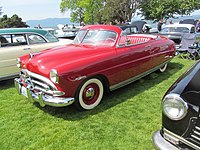| Hudson Pacemaker | |
|---|---|
 1951 Hudson Pacemaker Four-Door Sedan | |
| Overview | |
| Manufacturer | Hudson Motor Car Company |
| Production | 1939 1949–1952 |
| Model years | 1939 1950–1952 |
| Assembly | United States |
| Body and chassis | |
| Class | Full-size car |
| Layout | FR layout |
| Related | Hudson Hornet |
The Hudson Pacemaker is an automobile which was produced by the Hudson Motor Car Company in 1939 and for the 1950 through 1952 model years.




